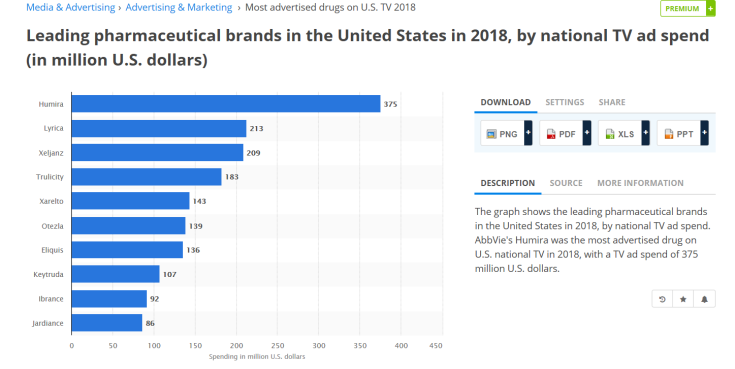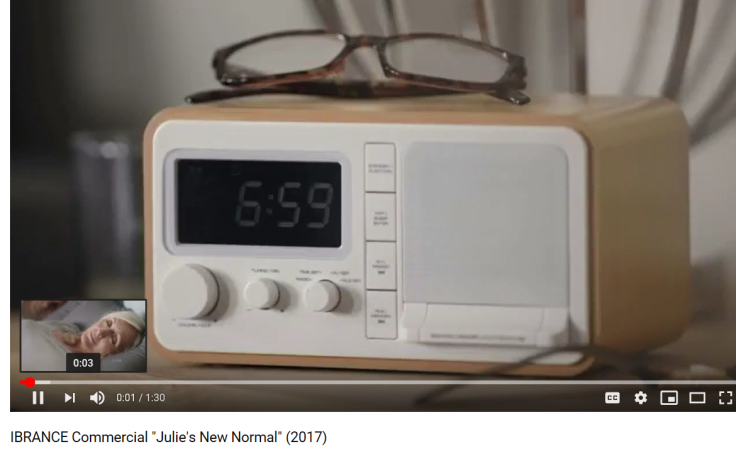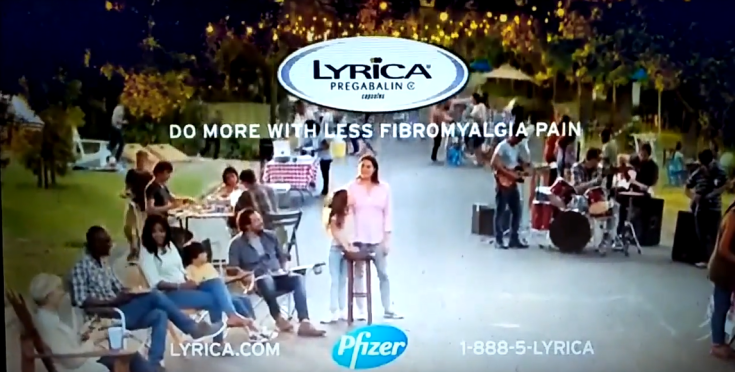Think about the last time you purchased a “Get Well/Better” card. Did it convey a somber/ safe/ inoffensive/ cautiously optimistic sentiment?

Now think of the last commercial you saw on tv for a drug that was supposed to take care of one’s ailments.
If it is an over the counter drug, the disease itself will be clearly presented, with the commercial indicating what exactly is happening when you are suffering and why you need help, with examples including a VERY descriptive Pepto Bismol dance or an Excedrin migraine simulating app.

Unlike many vague “Find Waldo and His call for Action” type commercials I’ve already discussed , the OTC drugs do not shy away from the company logos: they feel your pain and don’t want you to wander the aisles looking for the relief, trying to recall the name or the value preposition.

Now, something peculiar happens when it comes to the prescription drugs; something that has puzzled me for a couple years.
First, we have a product you can’t just grab off the shelf as the need arises. You need a doctor’s (and insurance’s) ok. Nethertheless, you see a commercial for the drug your doctor apparently is not aware of and instead needs you, the patient, to learn about and in turn ask the doctor to prescribe.
(Plenty commercials openly encourage viewers to ‘ask their doctor about Drug X”).

Source: https://www.statista.com/statistics/639356/tv-advertise-drugs-usa/
Secondly, the focus of the majority of TV commercials for prescription drugs is highlighting medications you are supposed to take for a long time.
The trend reflects an unprecedented healthcare shift that has happened in the last century: In 1900 the top four causes of death were TB, pneumonia, and diarrhea (with 40% of victims of these conditions being children under age 5); cancer was number seven. By 1940 the top cause of death was heart disease and cancer was second and that ratio seems to remain to this day.
With more people living longer (the proportion of people older than 60 nearly doubled between 1900 and 1940) the majority of illnesses seem to be linked to the realities of aging, leading to search for solutions that will never completely cure a patient, but only help them manage even most fatal conditions (Siddhartha Mukherjee, an oncologist and cancer researcher, seems to suggest in his book “The Emperor of All Maladies: A Biography of Cancer” that most likely cancer will become a chronic disease, something akin to diabetes.)
This positive development leads to more commercials that don’t tout a cure, but only controlling the acceptable state of health.
Thirdly, when it comes to prescription drug TV commercials, the disease itself is overshadowed by the exuberance of post illness situation that makes you think that the drug advertised will not only heal the existing issue, bringing you back to your previous state (aka to equilibrium or what Epicureanism considered happiness: an absence of pain/discomfort), but will actually make a patient BETTER OFF than before the disease.
The copy might have statements about returning to the “old you”, but what they often sell is regular ASPIRATIONAL dreams that most healthy people have: attending their child’s wedding, taking on an upper middle class hobby (gardening vs attending track racing), a vacation in a luxurious resort.

And as you see the post disease utopia, it strikes you: you’ve seen fantasies like these before… in Nancy Meyers ‘s movies (What Women Want (2000), Something’s Gotta Give (2003), The Holiday (2006), It’s Complicated (2009) and The Intern (2015); all movies that are famous for beautiful aspirational interiors and beautiful aspirational lifestyles.

” A retired teacher (Jennifer Gartner?) who volunteers with dogs find the love after turning to Lyrica.”

“A wedding planner (played of course by Jennifer Lopez) manages the endearing chaos of the wedding season with the help of Trulicity).
The most interest example of this trend of beautiful people doing fun things (while they allegedly battle life threatening diseases) is the recent commercial for Ibrence.
We witness an every day in a life of a woman who has a low stress job managing an elegant bri ght knitting store, with a schedule flexible enough to have a relaxing lunch with her attractive partner, and later knit with smiling customers while drinking from elegant artisan cups.
ght knitting store, with a schedule flexible enough to have a relaxing lunch with her attractive partner, and later knit with smiling customers while drinking from elegant artisan cups.
She then gets into her Volvo wagon and goes with her partner (and a paper bag of farmer markets’ finds) to visit supporting friends.
All beautifully filmed, just like Ibrence’s previous commercial that took Nancy Meyers’ esthetic so much to heart that it opens with a shot of the most beautiful and elegant alarm clock. 
You might think my main issue with this aesthetic is that all these drug commercials paint too optimistic view of managing diseases and shy away from side effects and the realities of managing ongoing sicknesses.
However, I think the biggest problem is that this elegant aspirational style of filming makes the commercials virtually interchangeable. Lyrica could have the narrator of Verzenio, Trulicity could promise the results of Ibrance.
And unless the drug was a first major player to the category (Lyrica, Viagra, Prozac) I can bet a whole budget needed to renovate your kitchen to fit the Nancy Meyers’ delicious styling you would not guess what disease each drug addressed without a description.
Direct-to-consumer (prescription) pharmaceutical advertising is a rarity around the world, but short of introducing an actual Medicare For All program in the States, it will take lots of political power (from an act of the Congress to federal enforcement change )to make prescription drug commercials disappear or become more realistic. I predict we will see more aspirational ads.
Now what do you think: would you mind having to manage a chronic disease if it meant impressing your kids with a straight shot or a picture perfect block party in a happy community?


Leave a comment